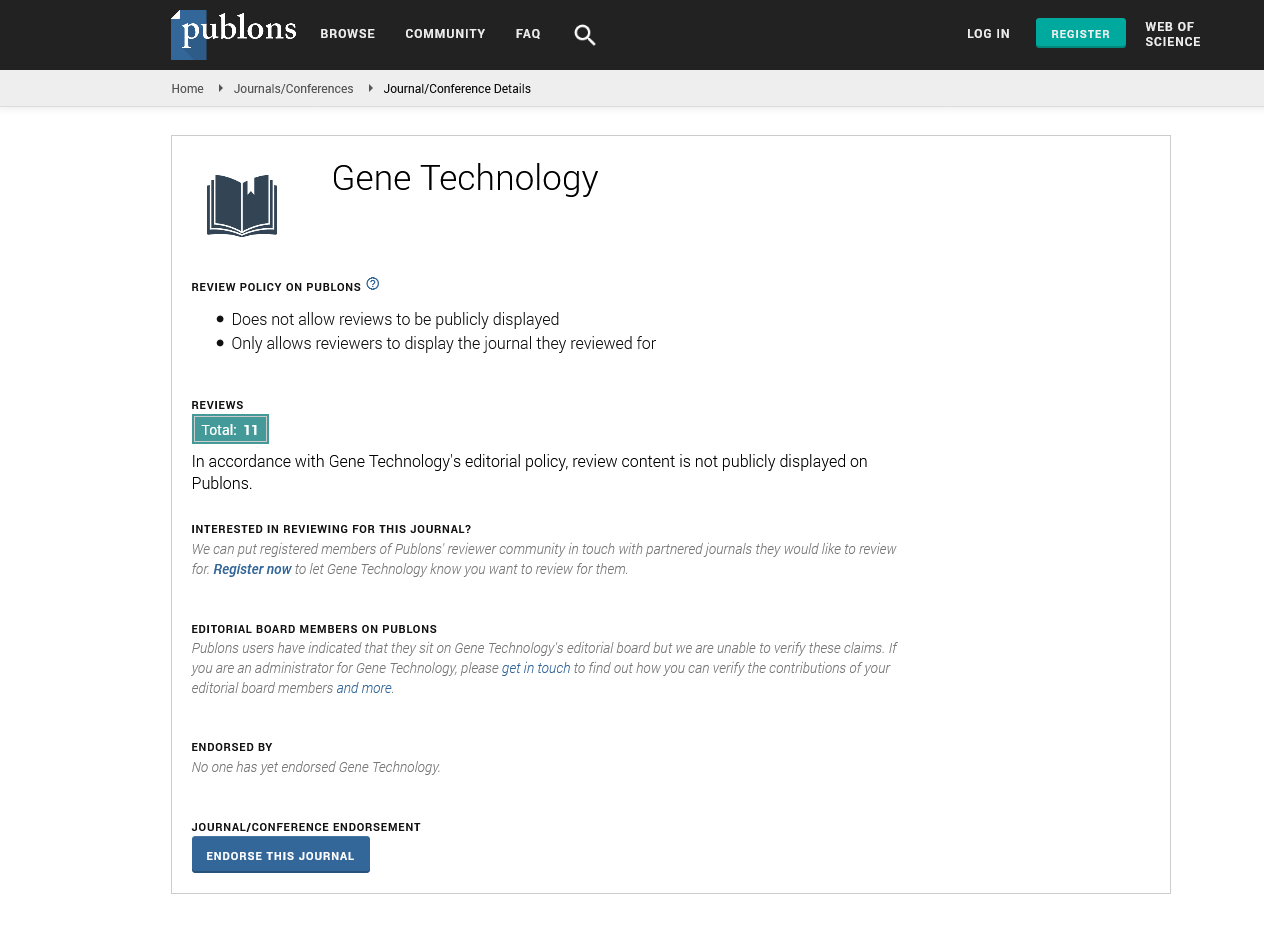Indexed In
- Academic Keys
- ResearchBible
- CiteFactor
- Access to Global Online Research in Agriculture (AGORA)
- RefSeek
- Hamdard University
- EBSCO A-Z
- OCLC- WorldCat
- Publons
- Euro Pub
- Google Scholar
Useful Links
Share This Page
Journal Flyer

Open Access Journals
- Agri and Aquaculture
- Biochemistry
- Bioinformatics & Systems Biology
- Business & Management
- Chemistry
- Clinical Sciences
- Engineering
- Food & Nutrition
- General Science
- Genetics & Molecular Biology
- Immunology & Microbiology
- Medical Sciences
- Neuroscience & Psychology
- Nursing & Health Care
- Pharmaceutical Sciences
Commentary - (2024) Volume 13, Issue 1
Gene Expression Techniques and Single Cell Analysis in Neurotoxicology
Faiza Tebra*Received: 01-Mar-2024, Manuscript No. RDT-24-25255; Editor assigned: 04-Mar-2024, Pre QC No. RDT-24-25255 (PQ); Reviewed: 18-Mar-2024, QC No. RDT-24-25255; Revised: 25-Mar-2024, Manuscript No. RDT-24-25255 (R); Published: 01-Apr-2024, DOI: 10.35248/2329-6682.24.13.267
Description
Neurotoxicology, the study of substances that can cause harm to the nervous system, plays an important role in understanding the impact of various environmental and chemical factors on brain health. Recent advances in scientific study have concrete the way for innovative methodologies, such as Single Cell Gene Expression Technologies (SCGET), to revolutionize the field of neurotoxicology. The application of SCGET in the complexities of neurotoxicity at the cellular level, offering unparalleled insights that traditional methods often manage. Neurotoxic substances, ranging from heavy metals to pesticides, can inflict severe damage to the nervous system, affecting cognitive function, behavior and overall brain health. Traditional neurotoxicology studies typically analyze bulk tissues, providing an overview of average responses within a sample. However, the heterogeneity of cell types and individual cellular responses are often masked in such analyses. This limitation prompted the exploration of more sophisticated techniques, leading to the adoption of single-cell approaches.
SCGET encompasses a variety of techniques that allow analyzing gene expression at the single-cell level. One of the prominent methods is single-cell RNA sequencing (scRNA-seq), which enables the profiling of individual cells based on their unique gene expression patterns. The advent of SCGET has provided neurotoxicologists with a powerful tool to dissect the intricate molecular landscape of the nervous system, offering unprecedented resolution and granularity. The nervous system is an intricately organized network of diverse cell types, each playing a specialized role. Traditional bulk analyses often obscure this cellular diversity, hindering a comprehensive understanding of neurotoxic effects. SCGET, on the other hand, allows into the individual responses of distinct cell populations, on how neurotoxic substances impact neurons, glial cells, and other specialized cells with precision.
Neurotoxicity is not a uniform phenomenon in different cell types may react differently to the same substance. SCGET enables the identification of cell-specific responses, exposing nuances that were previously undetectable. For instance, a neurotoxic compound may selectively affect dopaminergic neurons, providing insights into its potential role in neurodegenerative disorders like Parkinson's disease. Such cellspecific information is invaluable for designing targeted interventions and therapies. Another advantage of SCGET lies in its ability to capture the temporal dynamics of gene expression changes in response to neurotoxic insults. Traditional methods often provide snapshots of gene expression at specific time points, potentially missing transient or delayed responses. SCGET allows tracking the evolution of cellular responses over time, offering a dynamic perspective on neurotoxicity and its implications for long-term brain health. Identification of reliable biomarkers is important for assessing neurotoxicity and predicting potential adverse effects. SCGET facilitates the discovery of hidden biomarkers by uncovering subtle changes in gene expression that might go unnoticed in bulk analyses. These biomarkers can serve as early indicators of neurotoxic damage, enabling timely intervention and mitigation strategies.
Individual variability in susceptibility to neurotoxic substances is a key consideration in neurotoxicology. SCGET allows researchers to explore inter-individual differences by analyzing single cells from multiple subjects. This personalized approach enhances the accuracy of neurotoxicity assessments, as it accounts for genetic variations and unique cellular responses, paving the way for precision medicine in neurotoxicology. While SCGET holds immense in advancing neurotoxicology, it is not without challenges. The complexity of data generated, technical variations, and the need for specialized expertise are hurdles that must navigate. Nevertheless, ongoing advancements in technology and data analysis methods are gradually addressing these challenges. The integration of SCGET with other technologies, such as spatial transcriptomics and functional genomics, even more layers of neurotoxicity. Combining these approaches will provide a holistic understanding of how neurotoxic substances impact not only gene expression but also the spatial organization and functional consequences within the nervous system. The application of single cell gene expression technologies represents a standard change in neurotoxicology, enabling to dissect the intricate molecular landscape of the nervous system with unprecedented resolution. By cellular heterogeneity, identifying cell-specific responses, and capturing temporal dynamics, SCGET provides a comprehensive understanding of neurotoxicity at the single-cell level. As technology continues to evolve, the insights gained from SCGET hold immense potential for shaping targeted interventions, personalized medicine, and ultimately, advancing our ability to safeguard the brain from harmful environmental influences.
Citation: Tebra F (2024) Gene Expression Techniques and Single Cell Analysis in Neurotoxicology. Gene Technol. 13:267.
Copyright: © 2024 Tebra F. This is an open-access article distributed under the terms of the Creative Commons Attribution License, which permits unrestricted use, distribution, and reproduction in any medium, provided the original author and source are credited.

